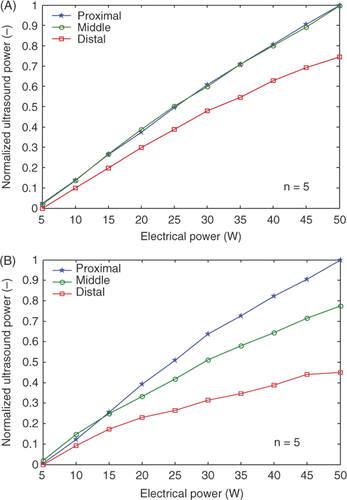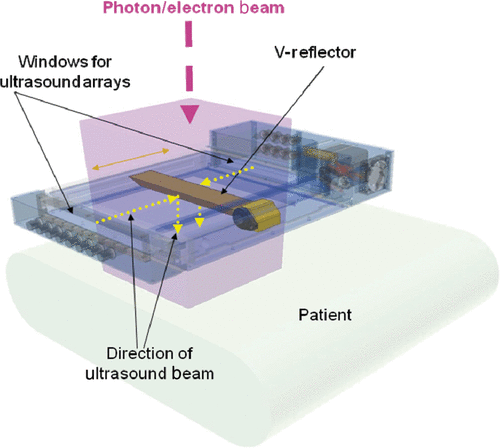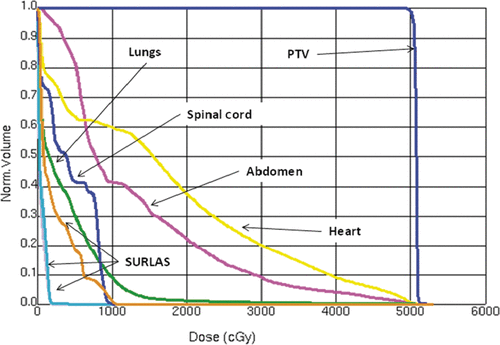Figures & data
Figure 2. Force balance results for the low (A) and high (B) frequency arrays. The three curves in each plot are for measurements for three different positions of the reflector with respect to an array. Distal was when the reflector was the furthest from the array in question and thus the ultrasound travelled the longest before reaching the force balance detector. Each data value was the average of five measurements. Standard deviations were too small to plot as error bars.

Table I. Maximum fundamental frequency (fmax) for four treatment window lengths (WL) and three array heights (AH).
Figure 3. Twelve-beam IMRT plan dose distributions on the axial, sagittal and coronal planes through the PTV and SURLAS applicator. An MVCT of the RANDO phantom with the SURLAS on top simulating a typical clinical set-up for the treatment of chest wall recurrence of breast cancer was used as the planning CT.


